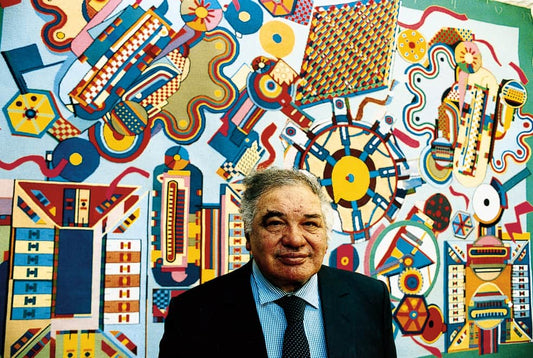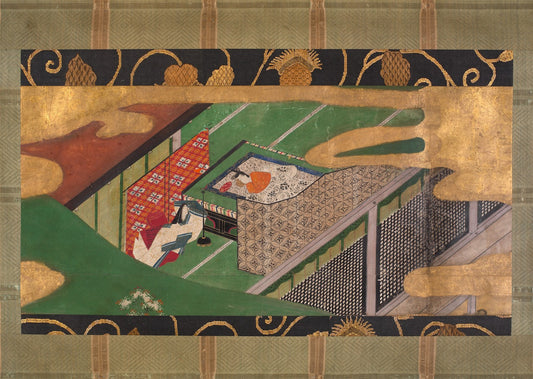The True Meaning of Celtic and Irish Symbols in Art
Celtic art has drawn inspiration from many other ancient civilizations. Still, specific elements of this wide-ranging collection of historical art—like symbols and imagery—have become synonymous with these Iron Age people and their various diasporas. Many of these symbols have made their way into pop culture thanks to the mainstream celebration of holidays such as St. Patrick’s Day. Still, few know the true meanings of these instantly recognizable motifs and designs.
Who were the Celts?
The Celts, an Indo-European people, predominantly resided in Western-Central Europe during the Iron Age and spoke Celtic languages. Tribes of Celts included the Gauls, Celtiberians, Gallaeci, Britons, Gaels, Boii, and Galatians. Commonly, Celtic settlements were farming communities. Cattle raising, sheep farming, and crop production fueled their economies. The Celts were frequently in conflict with the Romans, and many aspects of Celtic culture and mythology did not survive Roman conquests. Pagan religion was integral to Celtic society, which is evident in their art and surviving artifacts. Druids were high-ranking priests who sometimes performed animal and human sacrifices.

Today, in academic contexts, the Celts are defined as “speakers of Celtic languages” rather than a specific ethnic group. Places where Celtic languages or cultural elements have survived and are considered to be “Celtic” include Brittany, Cornwall, Ireland, the Isle of Mann, Scotland, and Wales.
Celtic Symbols
Celtic Cross
The Celtic cross is similar to that of a normal cross, but the Celtic version features a circle behind it. Often, the cross is adorned with several intricate, knotted designs. There are many theories as to its meaning. Possibly, the cross represents the four cardinal directions, the four elements, the four seasons, or the four stages of the day.

Dara and Trinity Knots
Knots are a common and instantly recognizable motif of Celtic designs, with differing knots having specific, identifying characteristics. A Dara knot is a complex, interwoven, circular design. Its name comes from the word Celtic doire, meaning “oak tree” or “oak forest.” Celtic Druids revered nature, and as such, this symbol represents the roots of the mighty oak tree and its associated traits—strength, power, and wisdom.
A similar knot is the trinity knot. Interwoven knots come to intersect at three distinct points, hence the trinity knot’s name. Frequently seen in the Book of Kells, the trinity knot is thought to be one of the oldest symbols of spirituality. The trinity represents the Celtic belief that good things come in threes, which can be observed in several other Celtic symbols.

Tree of Life
The Celtic Tree of Life manifests as a large tree with roots that extend deep into the ground and branches that grow equally as high, often enclosed in a circle. It represents balance and harmony, the connection between heaven and earth, and is another example of the Celts' connection with nature, believing that trees carried the spirits of their ancestors.
Other variations of the Tree of Life exist in many other cultures, including Norse, ancient Mesopotamian, Greek, Chinese, and Mesoamerican mythologies.

Triskelion
The triskelion is another Celtic symbol that emphasizes the value of threes. It features three clockwise spirals stemming from a central point and has rotational symmetry. Ancient Celtic tombs from the Neolithic and early Iron Age periods sometimes featured a triskelion engraved on them. The three spirals of the triskelion are said to represent the cycle of birth, life, and death. In the modern Irish healthcare system, the symbol is still used to represent end-of-life care for a patient.
A version of the triskelion, known as a triskele, consists of three human legs that make up the spiral shape of the triskelion and is featured on the flag of the Isle of Mann. Like the Tree of Life, this symbol is often seen today in jewelry.

Irish symbols
Claddagh
A Claddagh consists of a pair of clasped hands holding a heart, with a crown resting on top. It’s most commonly seen on Claddagh rings, a traditional Irish ring given as friendship, engagement, or wedding rings. The ring is used as an indicator of relationship status, based on which hand it’s placed on and how the design is oriented. The hands represent friendship, the heart represents love, and the crown represents loyalty, while the name comes from the village where the design originated.
Shamrock
Lorem ipsum dolor sit amet consectetur adipisicing elit. Illum neque eaque, autem sit soluta, voluptatum libero magnam tempore ullam at harum vel, ad reprehenderit, nemo veniam quas in voluptas hic. Lorem ipsum dolor, sit amet consectetur adipisicing elit. Natus id officia omnis suscipit aut architecto repellat a quia eaque reiciendis blanditiis perferendis hic, nihil, mollitia. Iste velit aperiam, numquam dolorem.
A shamrock, or clover, is the classic symbol of St. Patrick’s Day. It’s said that St. Patrick used the three leaves of the shamrock to explain the Christian concept of the Holy Trinity to the pagans during the 5th century. Art of St. Patrick typically features him presenting a shamrock to the viewer. The plant commonly grows in Ireland, and if you find a four-leaved clover, it’s considered to be lucky.
Insular art and symbology
Celtic and Irish symbols are commonly seen in insular art. Insular art refers to art produced in the post-Roman era of Britain and Ireland. The name comes from the Latin insula, meaning island. Insular art originated from the Irish monks who practiced Celtic Christianity. Insular art commonly features adornments of intricate, interlaced designs, as well as paintings featuring little to no depth or volume. These decoration elements included spirals, dara and trinity knots, and other geometric motifs.

The most notable example of insular art is the Book of Kells, an illuminated manuscript written in Latin manuscript created in a monastery in Scotland or Ireland. Illuminated manuscripts are documents where the text is decorated with detailed flourishes and small illustrations. The Book of Kells contains the four gospels of the New Testament of the Bible and is named for the Abbey of Kells in County Meath, Ireland, where the book was housed until it was acquired by Trinity College Dublin in the mid-1660s. It features many knotted designs, including the trinity knot. Celtic crosses are also present throughout.
Understanding the long history behind the symbols we use to represent specific holidays or cultures is essential to appreciate the art in which the symbols originally appeared. Additionally, learning about ancient cultures' values and beliefs helps us better understand our own and how certain elements of culture, like the rule of threes, have persisted through countless generations.
©ArtRKL™️ LLC 2021-2024. All rights reserved. This material may not be published, broadcast, rewritten or redistributed. ArtRKL™️ and its underscore design indicate trademarks of ArtRKL™️ LLC and its subsidiaries.







